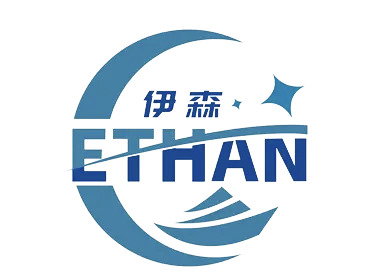Core Differences Between FCL and LCL Logistics
Definitions: Full Container Load vs Consolidated Shipments
Understanding the core differences between Full Container Load (FCL) and Less than Container Load (LCL) shipping methods is crucial for optimizing logistics. FCL refers to a shipping method where an entire container is designated to a single consignee's shipment, offering benefits like reduced handling and faster transit times due to fewer stops and direct routing. On the other hand, LCL involves consolidating multiple shipments from various consignees into one container, making it a flexible option for smaller shipments. The advantages of FCL include better security and minimized damages due to less cargo handling, while LCL allows for cost-effective shipping as you only pay for the space your cargo occupies. Each method presents unique benefits, and the decision often hinges on shipment volume and cost-effectiveness considerations.
Operational Structures in Maritime Transport
Examining the operational structures in maritime transport reveals distinct logistics chains for FCL and LCL shipments. FCL operations are simplified due to a singular cargo owner, resulting in streamlined port processes for loading and unloading. This often leads to quicker customs clearance and reduced administrative complexities. Conversely, LCL logistics demand meticulous coordination to consolidate various shipments effectively, which can introduce additional handling steps and an extended timeline for customs procedures. As the logistics chain varies between FCL and LCL, businesses need to consider factors such as the complexity of shipment management and customs interactivity. Understanding these operational differences is key to optimizing efficiency and cost-effectiveness in maritime transport logistics.
Cost Variables in Container Shipping Choices
Volume Thresholds and Pricing Models
Understanding the volume thresholds is crucial when deciding between FCL (Full Container Load) and LCL (Less than Container Load). Typically, companies opt for FCL when the shipment volume is sufficient to fill an entire container, leveraging economies of scale for reduced per-unit costs. FCL pricing is straightforward, often based on single-container rates, making it cost-effective for large shipments. Conversely, LCL allows shippers to pay only for the space they use in a shared container, providing flexibility for smaller shipments. Pricing models for LCL can vary significantly based on cargo volume and handling complexity, leading to different cost implications. This decision can impact the cost-efficiency based on shipping volumes.
Container Space Optimization Strategies
Both FCL and LCL offer unique opportunities for container space optimization. For LCL shipments, effective packing techniques can significantly optimize container space. Proper stacking methods and efficient use of packaging materials can enhance space utilization, potentially reducing overall costs. FCL shipments benefit from a different strategy; the key strategy here involves maximizing utilization by optimizing packing and internal cargo arrangement, which can lead to substantial cost savings. Companies should evaluate their shipment sizes and consider cross-docking or load consolidation strategies to benefit from reduced transportation costs.
Port Handling Fees Comparison
Port handling fees are significant factors in deciding between FCL and LCL shipping methods. FCL typically involves fewer handling processes at ports, resulting in potentially lower handling fees. In contrast, LCL requires more intricate operations due to the consolidation and deconsolidation phases, leading to higher port handling charges. Shipping industry reports highlight how these fees affect overall shipping cost calculations and strategic decision-making. Companies often conduct a thorough comparison of these fees to optimize shipping costs, ultimately influencing the choice between FCL and LCL based on cost-efficiency in port operations. Understanding these fee structures is critical for informed logistics planning.
Break-Even Analysis for Container Load Types
The 15 CBM Rule of Thumb
When tackling the decision between Less than Container Load (LCL) and Full Container Load (FCL) shipments, the 15 CBM rule of thumb often serves as a valuable guideline for cost-effectiveness. Once your shipments exceed approximately 15 cubic meters (CBM), transitioning from LCL to FCL becomes notably advantageous. This threshold is crucial because LCL shipments are billed per CBM, and with increasing volume, costs can escalate quickly. For instance, beyond the 15 CBM mark, purchasing a full 20-foot container often results in significant savings, sometimes even cutting costs by half compared to LCL shipping. Additionally, opting for FCL at this point enhances logistical efficiency by providing more container options, which can streamline operations and further reduce expenses.
High-Value Cargo Considerations
High-value cargo presents unique considerations in the decision-making process between LCL and FCL shipments. Despite lower volume, shipping high-value goods often justifies the transition to FCL. This is primarily due to enhanced security and reduced handling associated with FCL, thus minimizing risks of damage or loss. Furthermore, sectors like electronics, pharmaceuticals, and luxury goods commonly employ FCL strategies due to the value preservation and expedited transit involved. Businesses in these industries prioritize FCL to safeguard their investments and ensure prompt delivery to their clients. By opting for FCL, companies can not only potentially reduce insurance premiums but also offer their customers a level of service that is just not achievable with LCL solutions.
Impact of Shipping Regulations on Costs
FMC Co-Loading Rules Update 2024
The 2024 updates to the Federal Maritime Commission (FMC) co-loading rules will significantly impact LCL shipping by introducing revisions that ensure more stringent oversight. These changes include stricter documentation requirements and enhanced reporting protocols for LCL shipments, which may increase operational tasks for shippers. As a result, companies engaging in LCL shipping could face higher operational costs due to the need for compliance infrastructure and possible adjustments in freight forwarding practices. It's crucial for shippers to stay updated on these regulations to navigate the evolving landscape effectively.
Surcharge Transparency Requirements
Transparency in surcharges is increasingly important in controlling overall shipping costs. Recent regulatory efforts aim to simplify surcharge structures within the container shipping industry, fostering more accountable pricing practices. By enforcing clearer disclosure standards, shippers can better understand and anticipate costs, allowing for more informed decision-making. This wave of transparency ensures that shippers are not blindsided by unexpected charges, ultimately contributing to a more predictable and efficient shipping process. Adopting these practices not only aligns with compliance but also enhances trust between freight forwarders and their clients.
Strategic Approaches to Cost-Effective Shipping
Hybrid Shipping Models for SMEs
Hybrid shipping models provide a flexible solution for small and medium-sized enterprises (SMEs) by combining both Full Container Load (FCL) and Less than Container Load (LCL) strategies to optimize costs and efficiency. By leveraging FCL for larger shipments and LCL for smaller ones, SMEs can reduce unnecessary expenses while maintaining supply chain flexibility. This approach allows businesses to adapt quickly to changing market conditions and minimize their logistics footprint. Examples can be seen in SMEs that have successfully managed shipping costs: A study by Global Trade shows SMEs utilizing hybrid models to navigate fluctuating market demands efficiently. These models enable smaller businesses to compete more effectively in global markets by allowing them to scale operations according to demand without incurring the full costs of container shipments for smaller loads.
Inventory Consolidation Techniques
Inventory consolidation is a strategic approach that can significantly optimize shipping costs by harmonizing the choice between FCL and LCL based on cargo volume needs. This involves strategically coordinating inventory levels with shipping frequency to ensure optimal container usage and reduced overhead costs. Techniques such as cycle counting and demand forecasting can align shipment schedules with inventory requirements, thereby minimizing storage costs and minimizing unnecessary shipments. When implemented effectively, these techniques allow businesses to streamline operations and reduce logistical complications. By aligning inventory consolidation with shipping choices, businesses can achieve cost savings and greater operational efficiency, particularly when dealing with diverse product ranges or seasonal variations.
Through these strategic approaches, businesses can achieve a more cost-effective shipping process. Such practices not only facilitate more intelligent logistics management but also enhance competitive advantage by reducing costs and improving service delivery reliability.
FAQ
What is the difference between FCL and LCL shipping?
Full Container Load (FCL) shipping designates a whole container for a single consignee's shipment, while Less than Container Load (LCL) involves consolidating shipments from various consignees into one container. The main differences relate to how space and shipping are shared.
Why would a company choose LCL over FCL?
Companies may choose LCL for smaller volumes to avoid the cost of a full container. LCL allows you to pay only for the space you use, making it cost-effective for smaller shipments.
How do port handling fees differ between FCL and LCL?
FCL typically incurs lower port handling fees due to fewer handling processes. In contrast, LCL might have higher fees because of the extra steps needed for consolidating and deconsolidating cargo.
What is the 15 CBM rule of thumb in shipping?
The 15 CBM rule of thumb suggests switching from LCL to FCL shipments when your cargo exceeds 15 cubic meters, as it often becomes more cost-effective to ship via FCL at that point.
What considerations are important for shipping high-value cargo?
High-value cargo often benefits from FCL due to enhanced security and reduced handling, which minimizes risks of damage or loss. This is important for industries like electronics, pharmaceuticals, and luxury goods where value preservation is crucial.

